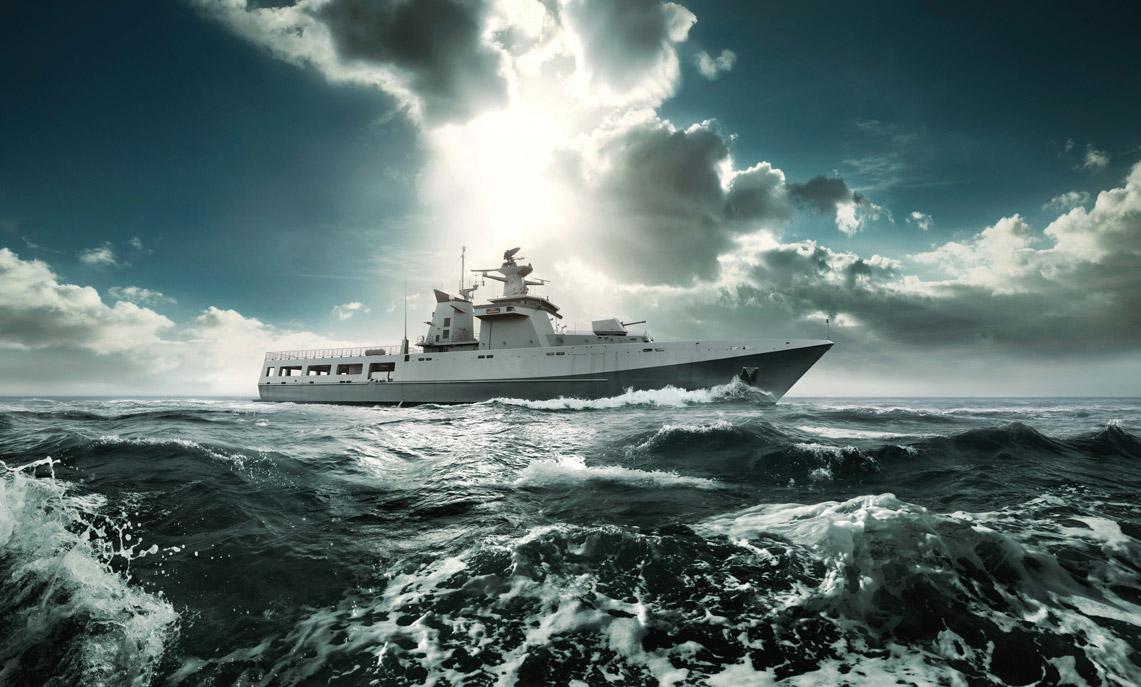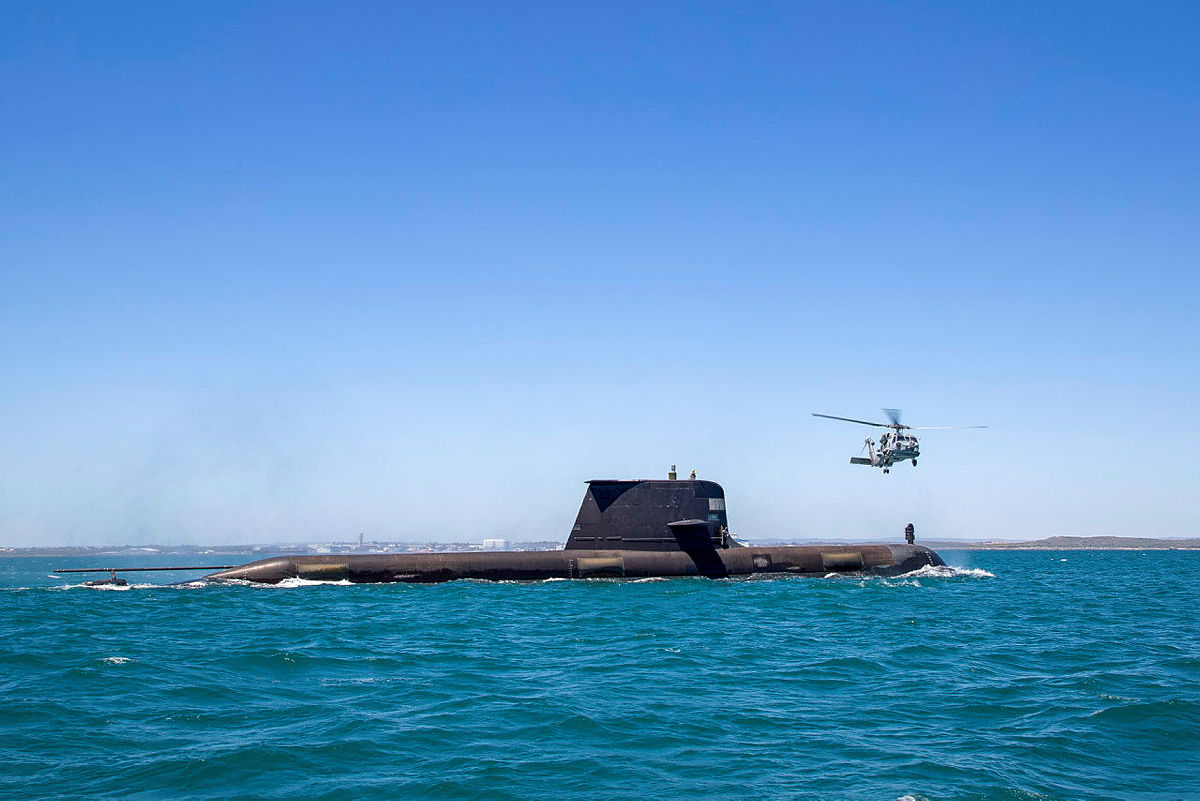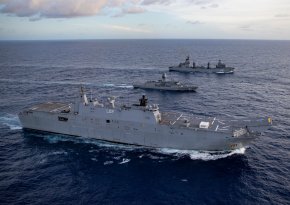Is light in the 25-30k tonne displacements or larger?
If you want any capability beyond the LHD, they would have to be larger.
Although I expect the LHD's to have a very long life more augmenting them than replacing them.
Again the big issue here is crew more than tonnage or even cost.
San Giorgio is ~ 200 + air crew (could be a ASW helo carrier)
Canberra is ~350 + air crew (although we already have crew pipeline for this and some existing crew on shored positions)
Hyuga is ~370 + air crew (is a ASW helo carrier)
Cavour is ~500 + air crew
Trieste is ~460 + air crew
Izumo is ~500 + air crew
QE ~680 + air crew
America class ~1000++ aircrew
Obviously you won't get anything smaller than a Canberra to operate a F-35. But there is a spectrum of aviation focused ships out there that could do some interesting roles.
In terms of adapting for F-35, that is a pretty well known program, with US wasp/America, UK QEII, Italy Cavour, Japan Izumo all gone through various conversions and adaptions for F-35 operation. They weren't overtly expensive or risky programs. Moving life boats, shielding radars/sensors from downdraft, desk surfacing, navigation and lighting etc. Honestly the skepticism about adapting the JC1/Canberra to the F-35 is overblow. Its significant, sure. Could it cost $250m+ per ship. Sure. Would it take 12 months? Maybe. Do these costs really frighten people anymore? We have spent billons on them, and many billions in escorts. Spains plan and Turkeys plan was to just buy F-35b and operate them from the platform.
The F-35b is a well known entity now with low risk. Seaguardian seems to also fill in that AEW/ISR. MC-55 may take over some of the Growlers roles, we have long ranged E7 and P8s. Reduce Choules manning down to what the UK did and use it more as a logistics ship than an amphibious platform, shift its ~100+ crew to a new 3rd LHD. Plan to replace the 36 SH for 24 F-35A + 18 F-35B. Base it out of WA for straits control. For growing the RAN ~150 people and the RAAF an additional 6 fighter frames (but reducing complexity by one whole fighter platform), you would have 3 carriers, 4 x F-35A squadrons, a Squadron of F-35b's, which could deploy, typically ~6-8 onto a Canberra or any allied carrier or forward deployed from Islands (Christmas, Manus or Singapore). It might even be possible to do it in less than 10 years. Without any loss of capability in any other area including amphibious operations or fighter, or electronic warfare. In addition Singapore could support our F-35B fleet when operating near Singapore surging to ~12 F-35Bs. More than that we would have some serious ASW carrier capability. More importantly, our ASW carrier, would be based out of the same ocean as our submarines, so we could actually train both submarines and ASW platforms.
But is that enough? I presume, having 24F-35A forward deployed to Butterworth (or where ever) and the ~6-12 F-35B's are just there providing organic cover, it probably is, if operating in our region, Malaysia, Singapore, Indonesian, PNG, south pacific. Our threats are bombers and lone long range fighters, patrol aircraft, as well perhaps the odd ship/sub. We won't be engaging with continent based fighter squadron hoards or large fleet action groups. With 3 ships, you could always surge capability, and call in additional airframes from allies.
But the biggest issue now is timing with the other platforms. Any new high end capability we don't currently have would be a huge and time consuming ask. Just selecting a new aviation ship would be 3-4 year project + 1 year to framework the project (Sea10000!). Building it would be 5-10 years. If its not already in service with the RAN, then 1-2 years to speed up to commissioning and FOC. Then you have to build the logistics train around it. Train pilots and crews for air operations. If its a new unique platform, then even if you are getting multiple ships you won't get 2-3 ships for several decades before you will have any sort of deployable capability. It would be a frantic push to bring such platforms on line before the mid 2040's. At which point Australia might as well go for broke, operate 1 large unique ship, like the QE and get one off mega capability. Maybe in partnership with the UK for all round capability, and the UK is probably a nation we could do that with.
If the ADF wanted to build a purple capability like Naval carrier, if it doesn't happen in the next 2 years, it will never, ever happen. Threats are multiplying faster than our solutions. A big ambitious carrier project seeing FOC in 2045 is IMO too late. By then things are moving on, China as a threat will have come and gone (either peacefully or through conflict) and the next growing threat won't be threatening enough to push it. If there wasn't the need to do it now, I don't see the need in 2040 or 2050. Much like the SK carrier project, its too late. There is time to do what Japan did, and convert existing ships and buy airframes, but not time to project, design, build, bring into service, FOC a bespoke carrier.
The time of selecting new platforms has come and gone IMO. The Subs will be the last new platform selection the RAN will see before global conflict, I doubt they will arrive before it starts. We can elect to build copies of existing units, or not to build copies. There is no time for new solutions. Particularly ones that heavily overlap with existing units. I am also skeptical of radical new platforms for the future past 2050. Drones will look very much like existing things, either manned platforms or munitions.





